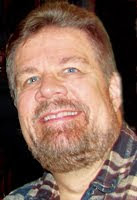Hirsch subsequently wrote dozens of works outlining core knowledge critical for students .... but mostly targeted at what parents should be satisfying themselves that their children are learning in school.
This “proper education” is steeped in that core idea of cultural literacy. The writer should place himself in front of each empty page with a solid concept of the likely level of “cultural literacy” his audience possesses.
In working with ESL students – mostly adults who’ve moved to America and are trying to acquire and hone their basic language skills – one of the biggest barriers is simple cultural literacy.
These intelligent, proud and hard-working immigrants can master the basic words, grammar and sentence structures. But every so often, a blank look inexplicably crosses their faces.
Over time, it’s become clear that this most frequently occurs when the English phrase presented doesn’t make literal sense. It might occur, for example, when a speaker unsuccessfully uses “Edsel” as a referent for a failure.
Phrases like “cat nap,” “dog-eared” and “raining cats and dogs” become clear to the foreigner’s ear upon reflection, but that pause for reflection may come at the sacrifice of the next two or three sentences.
“Remember the Alamo!” is likely to have a far different meaning – both literal and cultural – to a Mexican national.
For that matter, try explaining the meaning of the word “slang” to a relatively new English speaker, and you’re likely to find yourself confronting major issues of background experience, ethnicity and cultural variation.
For the writer facing that blank page, even native English speakers pose these kinds of challenges, to one degree or another, and more: Age and generational issues, class structure, political beliefs, sexual preference, work and job biases, for example.
Whether the writing challenge is commercial, personal or educational, the writer has more to contend with than the words he wants to communicate.
He must contend with an audience’s readiness and willingness to be communicated to.
Next: Percy Verantz: The dogged ardor of the artist
[For personal writing assistance, go to www.fixadocument.com]

No comments:
Post a Comment